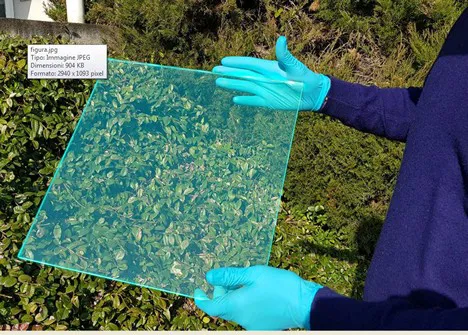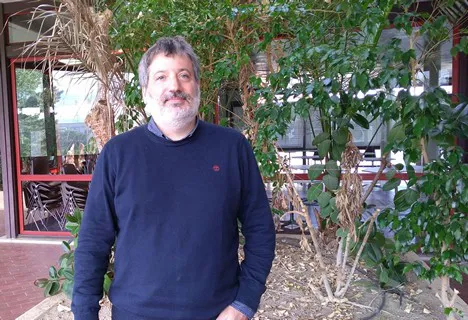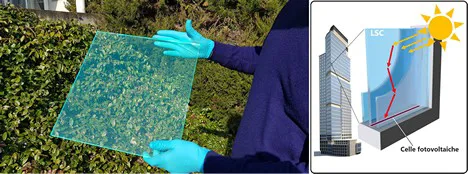Building integrated photovoltaics is a new way to conceive of photovoltaics that becomes useful in agriculture and consists in the design of innovative solutions to integrate devices that convert solar energy into electricity directly into the building.
 Transparent pane
Transparent pane
The Italian team includes researchers from the Istituto di struttura della materia (Ism) of Consiglio nazionale delle ricerche in Rome, the University of Milan Bicocca and Glass to Power: they developed an innovative material with a low environmental impact and high performance to create luminescent solar concentrators (Lsc).
The study was published on Joule - Cell Press: the system combines easy design with a low development cost, using a material that requires synthesis processes with a low environmental impact though reaching state-of-the-art solar conversion performances for this type of application.
 Giuseppe Mattioli
Giuseppe Mattioli
"Functioning is based on an intrinsic property of many organic molecule classes, i.e. the capability of absorbing solar radiation on a large spectrum of wavelengths and to re-issue it with a high-performance at a different and well-separated wavelength. Molecules that possess these characteristics and that are highly stable to heat and light are dispersed inside Plexiglas window panes: solar radiation is thus absorbed and re-issued by the molecules and the pane provides the most cost-effective "waveguide" to capture radiation and convey it to the edges," explains Giuseppe Mattioli (Cnr-Ism).
This solution is also practical for greenhouses containing vegetables that cannot lose the light factor in any way.
"Plexiglas panes containing the new material developed absorb UV light, not the visible light. Panes are therefore transparent and visible light is transmitted into the greenhouse where it promotes photosynthetic processes without alteration."
Of course, at the moment, there are not specific studies on the cost/benefits of this technology for greenhouse cultivation, but it is clear it opens new possibilities.
"The main advantage of this innovation consists in the use of molecules that require simple and quick synthesis free of solvents, and is therefore eco-friendly," adds Luca Beverina from the University of Milan Bicocca.
But there is more
"Unlike the photovoltaic panels used so far, which are opaque and dark or semi-transparent, this systems enables the use of transparent panes with advantages from both an aesthetic and functional point of view. In addition, the functioning principle of the device enables overcoming the current placement constraints, which are particularly stringent in terms of inclination and orientation. Photovoltaic devices based on luminescent solar concentrators represent an irreplaceable element for traditional systems," concluded Mattioli.
Contacts:
Giuseppe Mattioli, Cnr-Ism
Email: [email protected]











